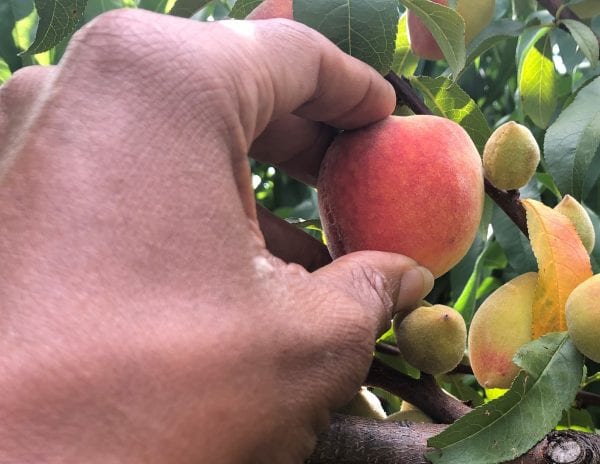Crop Production

Phony peach disease is caused by a bacterium called Xylella fastitiosa. This not only causes PPD in peaches, but different strains of the bacterium also cause diseases in other crops, such as
- plum leaf scald in cultivated plums
- Pierce’s disease in grapes
- variegated chlorosis in citrus
- bacterial leaf scald in blueberries and a host of landscape trees, such as oak, maple, and elm
PPD is spread from location to location primarily by leafhoppers, also known as glassy wing sharpshooters. The leafhopper is a xylem feeder insect, meaning it uses its piercing mouthparts to access the nutritious sap flowing in the xylem vessels from the roots upward toward the developing shoots and leaves. As the leafhopper feeds, it will inadvertently inject the bacteria into the plant.
In peaches, the bacterium primarily takes up residence in the roots. In fact, it is extremely difficult for researchers to diagnose PPD using leaf samples. It is necessary that root samples be used for diagnosis. Spread of the disease in an orchard is caused by either continued leafhopper feeding on other trees or by root-to-root contact. Root-to-root contact is why multiple trees with symptoms of PPD can be found growing side by side in the same row.
 Symptoms
Symptoms
Peach growers should scout their orchards for PPD regularly. PPD causes a reduced growth of the internodes (spaces between groups of leaves on developing shoots) on peach tree. This causes the trees to form a compact growth habit. Often, the tops of infected trees will appear flattened. Older leaves will be darker green when compared to the leaves of heathy trees. In the fall, leaves on infected trees tend to remain on the tree longer. Trees infected before they are mature will never produce a crop. Mature trees infected with PPD will begin to flower earlier and the fruit will be smaller and less marketable. Eventually, these trees will no longer produce fruit. For more information on identifying phony peach disease in an orchard, contact your Extension office.
Control
Currently, there are no spray recommendations for leafhoppers to prevent the occurrence of PPD. To prevent the spread of PPD, researchers recommend that infected trees be removed from the orchard. Native plum trees act as reservoirs of the bacterium, so these, as well as other wild stone fruits, should be removed. Individuals producing peaches who are interested in producing plums should avoid locating plum orchards within a mile of their peach orchards if possible.
While little to no bacterium can be isolated from leaves and shoots, good sanitary practices should be used. These include practices such as, cleaning pruners with alcohol or a 10 percent bleach solution when making pruning cuts between trees.

